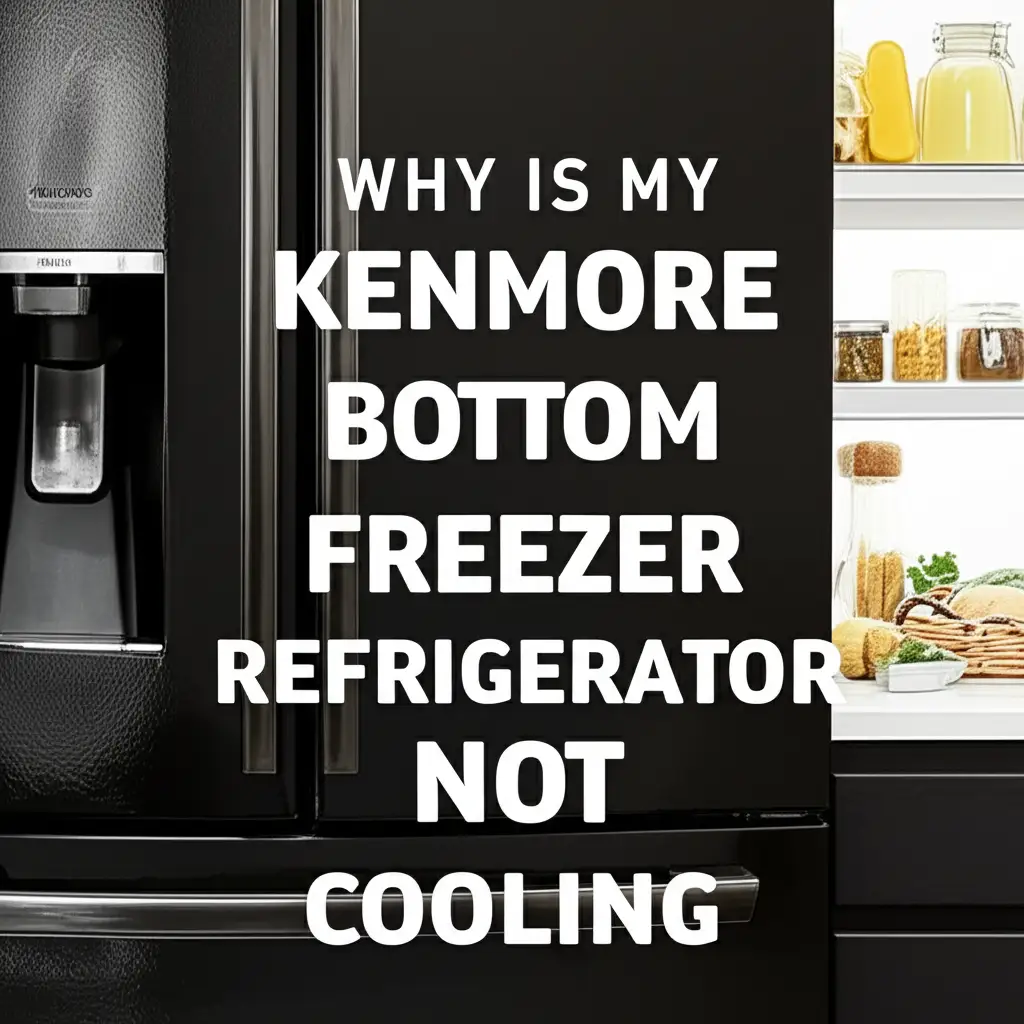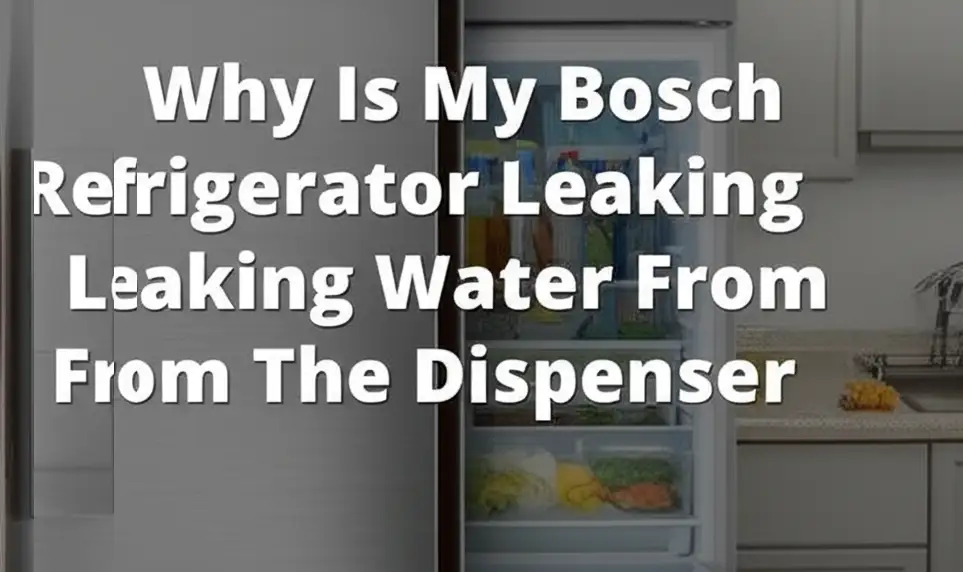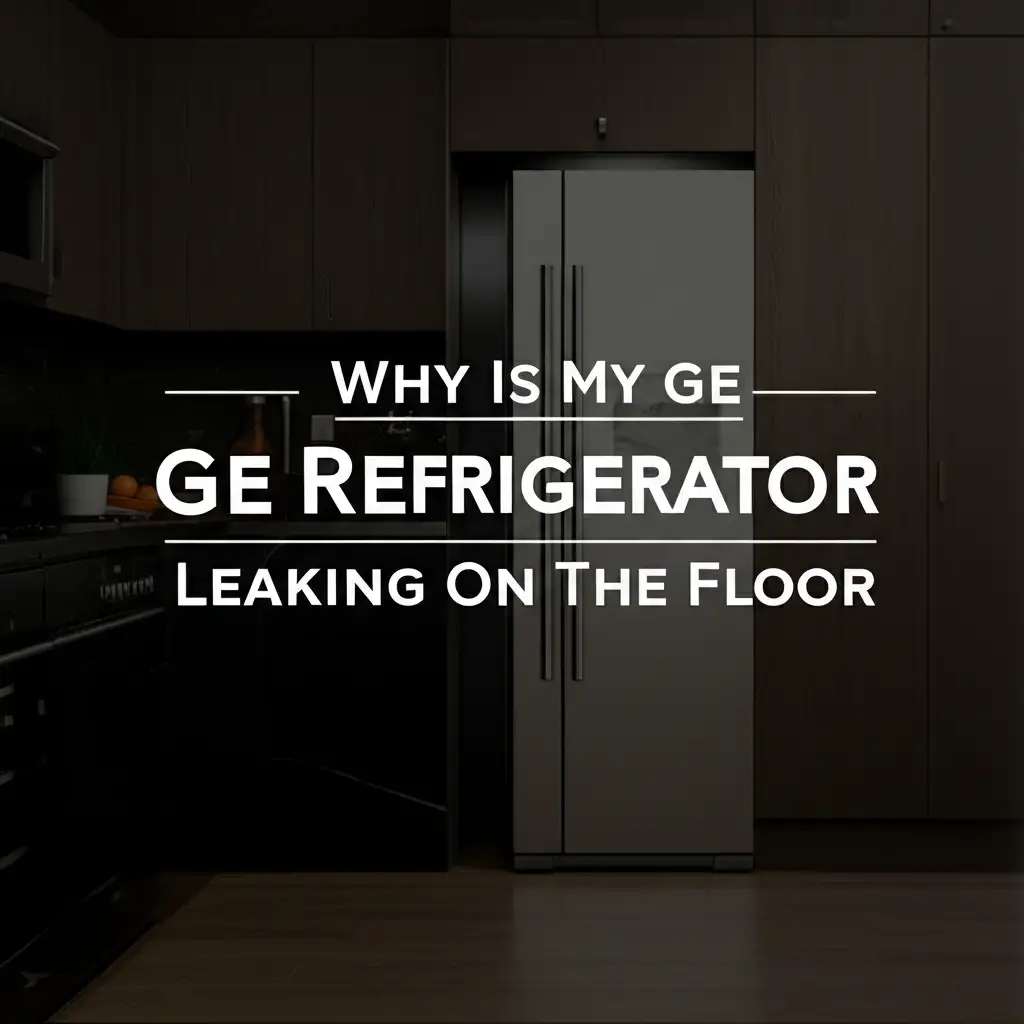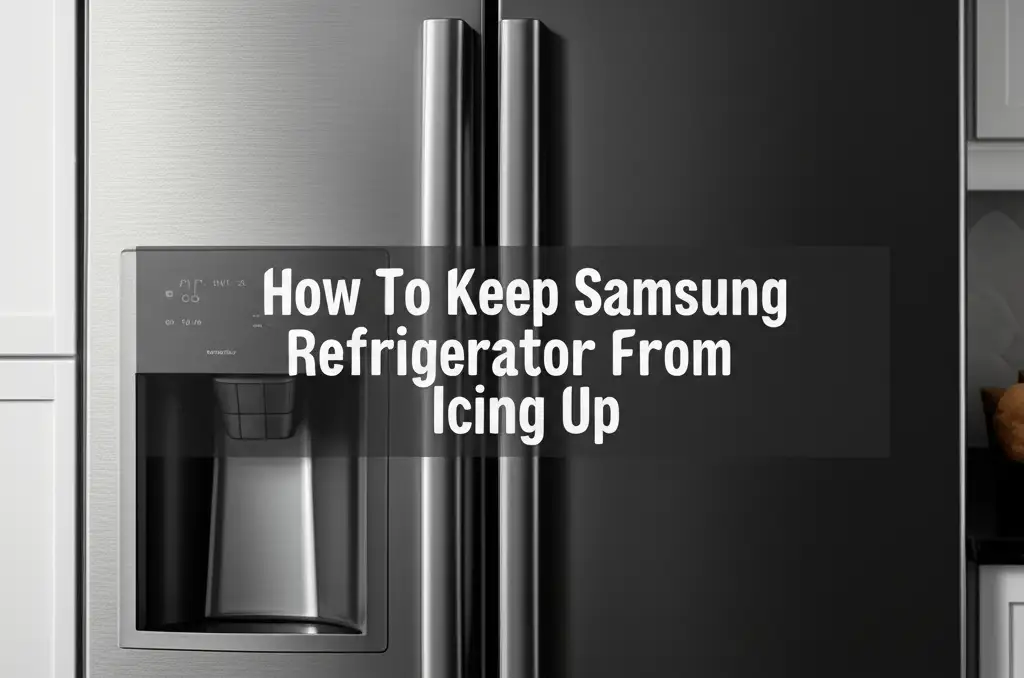· Katria Melrose · Refrigerator Repair · 20 min read
Why Is My Side By Side Refrigerator Freezing Up
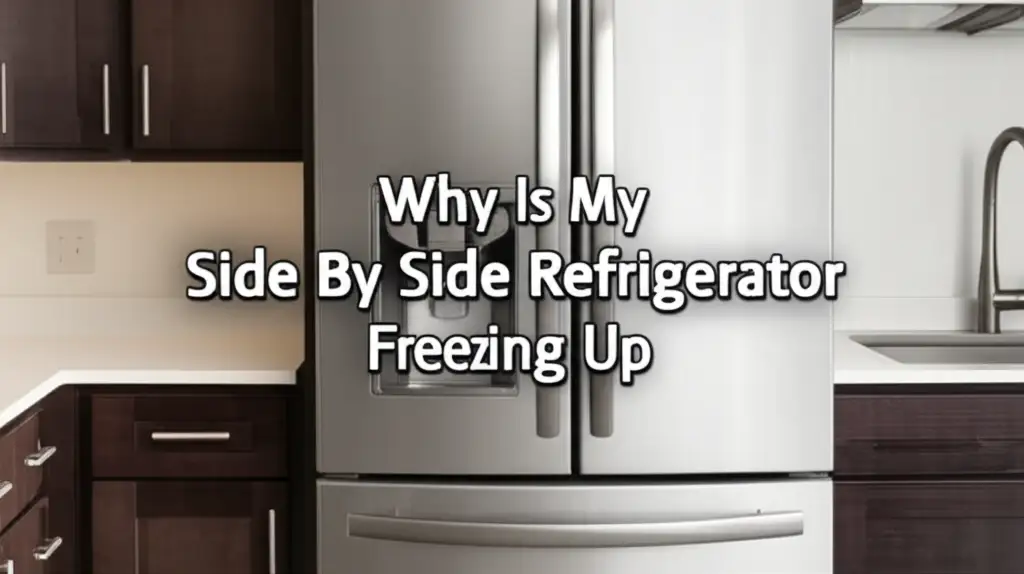
Troubleshoot Your Freezing Side By Side Refrigerator
Have you ever opened your side by side refrigerator only to find ice where your fresh produce should be? Or perhaps ice has formed on the back wall of your freezer, growing larger each day. A freezing refrigerator is a common household problem that causes frustration and wastes food. It points to underlying issues with your appliance’s cooling system. Knowing the signs and causes helps you address the problem effectively.
In this article, we will explore the main reasons why your side by side refrigerator is freezing up. We will look at common culprits like defrost system failures, airflow problems, and temperature control malfunctions. We will also provide clear steps you can take to diagnose and fix these issues. This guide aims to help you understand your appliance better and restore its proper function, keeping your food fresh and ice-free.
Takeaway:
- Check Defrost System: Inspect the defrost heater, thermostat, and timer for failures.
- Verify Temperature Settings: Ensure the refrigerator and freezer are set to optimal temperatures.
- Clear Airflow Obstructions: Remove items blocking vents and clean condenser coils.
- Inspect Door Seals: Look for gaps or tears in the door gaskets.
- Examine Drain Line: Clear any ice or debris from the defrost drain.
A side by side refrigerator freezes up because a component in its defrost system or temperature control mechanism has failed, or airflow is blocked. This leads to ice accumulation, causing food to freeze in unintended areas and affecting overall cooling efficiency. Addressing these issues often restores normal operation.
Understanding Your Refrigerator’s Defrost System
Your side by side refrigerator works hard to keep food cold. It has a clever system to prevent too much ice from building up inside. This system is called the defrost system. When it fails, ice can accumulate in places it should not, causing your refrigerator to freeze up. Understanding how this system works helps you pinpoint problems.
The defrost system includes three main parts: the defrost heater, the defrost thermostat, and the defrost timer or control board. The defrost heater melts frost that builds on the evaporator coils. The defrost thermostat monitors the temperature and tells the heater when to turn on and off. The defrost timer or main control board schedules these defrost cycles. If any of these parts stop working correctly, ice will build up. This ice can then make your fresh food section too cold. Sometimes, it can even cause food in the freezer to freeze more than it should, impacting its quality. For instance, if your Whirlpool side by side refrigerator is freezing food, a defrost system issue is a likely cause. You can find more details on why this happens at Why Is My Whirlpool Side By Side Refrigerator Freezing Food.
Common Defrost System Issues:
- Defrost Heater Failure: The heater element burns out over time. When it fails, frost cannot melt off the evaporator coils. Ice builds up and blocks airflow. This makes your refrigerator work harder but cool less effectively. Eventually, ice might expand into the fresh food compartment.
- Defrost Thermostat Malfunction: This small device senses the temperature. It activates the defrost heater when the coils get too cold. If the thermostat is faulty, it might not tell the heater to turn on. This also leads to ice accumulation.
- Defrost Timer or Control Board Problems: The timer or the main control board tells the defrost cycle to start. If it gets stuck or fails, the defrost cycle will not run. This means the heater will never turn on, leading to thick ice. Many modern refrigerators use a control board instead of a mechanical timer. For example, if your Samsung refrigerator keeps freezing food, the control board might be failing to initiate defrost cycles. Learn more here: Why Does My Samsung Refrigerator Keep Freezing My Food. Similarly, GE refrigerators can also experience freezing issues due to control board problems. Check out Why Does My GE Refrigerator Keep Freezing My Food for specific insights.
Diagnosing these parts usually requires a multimeter to test for continuity. Always unplug the refrigerator before attempting any repairs. If you find one of these parts has failed, replacing it can often resolve the freezing issue.
Incorrect Temperature Settings and Sensor Problems
Temperature settings play a big role in how your side by side refrigerator performs. If your refrigerator or freezer is set too low, it will naturally cause items to freeze more. Sometimes, settings get changed by accident. Other times, the sensors that read the temperature can malfunction, leading to incorrect cooling.
Many people set their refrigerator temperature lower than needed. The ideal temperature for the fresh food section is between 35°F and 38°F (1.7°C and 3.3°C). The freezer should be set to 0°F (-18°C). If your settings are much lower than these, your side by side refrigerator might be freezing up simply because it is doing what you told it to do. Always double-check your temperature settings first. If your refrigerator does not seem to respond to temperature changes, or if it feels too cold even on higher settings, a sensor might be the issue. For example, if your Frigidaire refrigerator is not cooling or freezing correctly, it could be due to a faulty thermistor or control board. Learn more at Why Is My Frigidaire Refrigerator Not Cooling Or Freezing.
Common Temperature Control Issues:
- Faulty Thermistor/Temperature Sensor: A thermistor is a sensor that monitors the temperature inside your refrigerator. It sends readings to the control board. If the thermistor is faulty, it might send incorrect temperature readings. This can make the control board think the refrigerator is warmer than it actually is. As a result, the compressor runs more often, making the interior too cold and causing items to freeze.
- Malfunctioning Control Board: The control board is the brain of your refrigerator. It takes input from sensors and controls components like the compressor and fans. A faulty control board can misinterpret signals or send wrong commands. This might lead to continuous cooling cycles or improper defrost cycles, causing excessive freezing. This is a less common issue but can be complex to diagnose and often requires professional help.
- Damaged Thermostat: Older refrigerators might use a mechanical thermostat instead of a thermistor and control board. This thermostat directly controls the compressor. If it is damaged, it might not cycle the compressor properly. This could result in the compressor running too long, over-cooling the compartments.
Checking the temperature with an external thermometer can help confirm if your appliance’s internal sensor is accurate. If you find your refrigerator is consistently colder than its set temperature, one of these components could be at fault. Sometimes, simply knowing how to adjust the temperature display, such as How To Change C To F On LG Refrigerator, can ensure you are setting the correct temperature from the start.
Airflow Issues and Blocked Vents
Proper airflow is vital for your side by side refrigerator to maintain consistent temperatures. Inside your refrigerator and freezer, cold air circulates through vents. This air needs to move freely to cool all compartments evenly. If these vents become blocked, cold air can get trapped in certain areas, leading to freezing in those spots while other areas might not cool enough.
One common reason for blocked airflow is overpacking the refrigerator. When shelves are too full, items can block the air vents. This prevents cold air from distributing throughout the fresh food section. Similarly, if food packages are pushed too close to the back wall, they can block the cold air inlet from the freezer. This leads to ice building up behind the items and freezing the food directly in front of the vent. Another often overlooked factor is dirty condenser coils. While not directly blocking internal vents, dirty coils make the compressor work harder and less efficiently. This can indirectly affect cooling balance. Regularly cleaning under your refrigerator, as detailed in How To Clean Under A Refrigerator, and cleaning the coils can improve overall performance.
Causes of Airflow Problems:
- Overpacked Refrigerator or Freezer: My refrigerator sometimes gets too full, especially after grocery shopping. This can block the internal air vents. Make sure there is enough space around your food items for air to circulate. Leave a few inches of space between the food and the back wall.
- Blocked Air Vents: Small items, bags, or even ice build-up can block the air vents between the freezer and fresh food compartments. These vents control how much cold air flows into the refrigerator. If the freezer side has excessive ice, it can block these vents. This results in the fresh food section becoming too cold.
- Dirty Condenser Coils: The condenser coils are usually found at the back or underneath your refrigerator. They release heat from the refrigerant. If these coils are covered in dust and dirt, they cannot dissipate heat effectively. This makes the compressor run longer and hotter, which can lead to cooling inconsistencies and sometimes over-cooling in certain areas. Cleaning the coils is a key part of refrigerator maintenance. Here’s a guide on How To Clean Refrigerator Coils.
- Faulty Damper Control: Some refrigerators have a damper that opens and closes to regulate airflow between the freezer and fresh food sections. If this damper is stuck open, too much cold air will flow into the refrigerator, causing items to freeze. This part is typically located near the air vent.
Regularly organizing your refrigerator and ensuring proper spacing for items helps maintain good airflow. Cleaning the coils and checking for visible obstructions will also prevent many freezing issues. A clean appliance runs more efficiently. You can also explore general refrigerator cleaning tips at How To Clean The Refrigerator.
Faulty Door Seals and Gasket Leaks
The door seals, also known as gaskets, are crucial for maintaining the correct temperature inside your side by side refrigerator. They create an airtight seal when the doors are closed, keeping cold air in and warm, humid air out. If these seals are damaged or become brittle, warm air can leak into your refrigerator. This might seem counterintuitive, but it is a common reason for freezing issues.
When warm, moist air enters the cold environment of your refrigerator, it condenses and turns into frost or ice. This happens particularly near the point of entry. Over time, this ice build-up can become extensive, impacting cooling efficiency and even causing food to freeze. A common sign of a faulty door seal is visible condensation or ice around the door frame. You might also feel a draft if you place your hand near the seal. Sometimes, a leaky seal can also contribute to water leaks from your refrigerator. If your side by side refrigerator is leaking water, a bad seal could be part of the problem. You can investigate this further at Why Is My Side By Side Refrigerator Leaking Water.
Inspecting and Fixing Door Seals:
- Visual Inspection: Look closely at the rubber or magnetic gasket around both refrigerator and freezer doors. Check for any cracks, tears, or signs of wear. Pay attention to corners and areas where the door might frequently be opened or closed.
- Paper Test: My favorite way to check seals is the dollar bill test. Close the door on a dollar bill, half inside and half outside. If you can easily pull the bill out, the seal in that spot is weak. Repeat this test all around the door.
- Cleaning the Gasket: Sometimes, dirt, food debris, or sticky residue builds up on the gasket. This can prevent a proper seal. Clean the gasket thoroughly with warm, soapy water. Use a soft cloth and make sure to dry it completely afterward. A clean gasket can often restore a good seal.
- Reshaping a Warped Gasket: If the gasket is not torn but appears warped or flattened, you might be able to reshape it. You can gently warm the gasket with a hairdryer on a low setting. Once warm and pliable, gently pull it back into shape and hold it until it cools. Be careful not to overheat the plastic.
- Replacing a Damaged Gasket: If the gasket is torn, brittle, or severely warped, it needs replacement. You can usually order replacement gaskets specific to your refrigerator model. This is a DIY-friendly repair for many homeowners. Just be sure to install it correctly to ensure an airtight seal.
A good door seal ensures your refrigerator runs efficiently and prevents unnecessary ice build-up. Regular cleaning and inspection can extend the life of your gaskets and save you from freezing problems.
Evaporator Fan Motor Malfunctions
The evaporator fan motor plays a crucial role in circulating cold air within your refrigerator and freezer. It pulls air over the evaporator coils, which are very cold, and then pushes that cold air throughout the freezer and into the fresh food compartment. If this fan motor malfunctions, air circulation stops. This can lead to uneven cooling, and sometimes, excessive freezing.
When the evaporator fan motor fails, cold air cannot be properly distributed. This causes the evaporator coils to become excessively cold and ice-bound. The lack of air movement can result in a significant build-up of ice on the coils. This build-up prevents the refrigerator from cooling efficiently, and the trapped cold air can cause items nearby to freeze solid, even if the overall appliance struggles to maintain its set temperature. You might also notice that the refrigerator section becomes too warm, while the freezer has localized spots of extreme cold and ice.
Signs of a Faulty Evaporator Fan Motor:
- No Fan Sound: When you open the freezer door, the fan should typically stop running. Close the door, and listen carefully. You should hear a humming or whirring sound as the fan operates. If you hear nothing, the motor might be faulty.
- Excessive Ice on Evaporator Coils: If you remove the back panel in the freezer section, you might see the evaporator coils completely covered in a thick layer of ice. This can happen because the fan is not moving air across them to help melt the frost during defrost cycles or simply to circulate the cold.
- Warm Refrigerator, Cold Freezer (or vice-versa): Since the fan pushes air to both compartments, a faulty fan can cause one section to be too warm while the other is too cold or freezing. The freezer might still be cold from direct cooling, but the refrigerator section won’t receive enough cold air.
- Unusual Noises: A failing fan motor might produce grinding, buzzing, or squealing noises. This indicates that the motor bearings are worn out, or the fan blade is hitting something. If you hear these sounds, the motor is likely on its way out.
Replacing an evaporator fan motor is often a straightforward repair. You will need to unplug the refrigerator, usually remove shelves and an interior panel in the freezer, and then unmount the old motor and install the new one. Ensure you use a replacement part specific to your refrigerator model. This fix can restore proper air circulation and resolve the freezing issue.
Clogged Drain Line and Ice Build-Up
One common reason for ice build-up and freezing problems in your side by side refrigerator is a clogged defrost drain line. During the defrost cycle, the ice that melts from the evaporator coils turns into water. This water then flows down a drain tube, often located at the bottom of the freezer compartment, and into a drain pan where it evaporates. If this drain line becomes clogged, the water cannot escape.
When the drain line is clogged, the melted water has nowhere to go. It then refreezes, typically at the bottom of the freezer compartment or directly under the evaporator coils. This accumulation of ice can become quite substantial. It can block the drain, reduce airflow, and even cause water to back up and freeze on the freezer floor or drip into the fresh food section. This issue often results in ice forming on the back wall of the freezer or within the fresh food compartment below. Sometimes, the water dispenser line can also freeze if the drain issue is severe, as seen in problems like How To Keep GE Refrigerator Water Dispenser From Freezing. Similarly, ice maker lines are vulnerable, and you might experience issues like Why Does Samsung Refrigerator Ice Maker Keep Freezing Up or Why Does My Frigidaire Refrigerator Water Line Keep Freezing.
How to Address a Clogged Drain Line:
- Locate the Defrost Drain: The defrost drain is usually a small hole or channel located beneath the evaporator coils in the freezer. You will likely need to remove the freezer’s back panel to access it.
- Clear Visible Ice: If there is a large block of ice at the bottom of the freezer or around the drain hole, you will need to melt it. You can use a hairdryer on a low setting or pour warm water into the drain hole (be careful not to pour too much water too quickly, as it will just refreeze if the clog is deep).
- Flush the Drain Line: Once the visible ice is melted, use a turkey baster or a syringe to flush the drain line with a mixture of warm water and a little baking soda or bleach (diluted). This helps to dissolve any stubborn clogs, such as food debris or mold.
- Use a Drain Snake or Wire: If flushing does not work, carefully insert a small, flexible drain snake or a piece of insulated wire (like from an old appliance cord) into the drain tube. Gently push it through to dislodge any blockages. Be careful not to puncture the tube or any other components.
- Clean the Drain Pan: The drain pan, usually located at the bottom of the refrigerator, catches the defrost water. Make sure it is clean and free of debris. A full or dirty drain pan can sometimes contribute to odors and indicate drainage issues.
Clearing a clogged drain line is a common fix for many freezing problems. It is a relatively simple task that can prevent significant ice build-up and ensure your refrigerator functions correctly.
Other Factors and Environmental Conditions
While component failures and airflow issues are common, other less obvious factors can contribute to your side by side refrigerator freezing up. Sometimes, the problem is not with a faulty part but with how the appliance interacts with its environment. Understanding these can help you prevent future issues and maintain your refrigerator’s optimal performance.
The external environment where your refrigerator is located plays a role. Extreme ambient temperatures can affect how your refrigerator regulates its internal climate. For example, if your refrigerator is in a very cold garage, it might struggle to run its defrost cycle properly because the freezer section never gets warm enough to trigger it. Conversely, if it’s in a very hot and humid area, the compressor might work overtime, potentially leading to over-cooling or constant frost build-up as moist air enters the system. Also, ensuring the refrigerator is level is important. An unlevel appliance can cause doors to not seal properly, leading to air leaks.
Less Common Causes and Environmental Influences:
- Too Much Humidity: If you live in a very humid climate, or if the humidity level inside your home is high, more moisture will inevitably enter your refrigerator every time you open the door. This excess moisture can condense and freeze, especially if the door seals are not perfect. My advice is to keep the refrigerator doors closed as much as possible and check those seals often.
- Overly Cold Room Temperature: While less common, if your refrigerator is in an unheated garage or basement that drops below 50°F (10°C), some refrigerators can have trouble with their temperature regulation or defrost cycles. The refrigerator’s design assumes a certain minimum ambient temperature for proper operation.
- Improper Leveling: Your side by side refrigerator should be level. If it is not, the doors might not close and seal properly. This allows warm air to seep in, leading to condensation and ice build-up. Use a level to check both side-to-side and front-to-back leveling. Adjust the leveling feet as needed.
- Control Board Glitches (Software Issues): Modern refrigerators often have sophisticated electronic control boards. Sometimes, these boards can experience software glitches or minor malfunctions that are not complete failures. These glitches can cause erratic temperature control or inconsistent defrost cycles. Often, a “hard reset” (unplugging the refrigerator for 15-30 minutes) can resolve minor control board issues.
- Compressor Running Continuously: While a compressor running constantly usually points to a cooling problem (not cold enough), if it runs too much without proper regulation, it can also lead to over-freezing. This might be due to a faulty thermistor or control board sending incorrect signals.
Consider all these factors when troubleshooting your freezing refrigerator. Sometimes, a simple environmental adjustment or a quick reset can solve the problem without needing to replace any parts. Regular maintenance, like ensuring the unit is level and inspecting door seals, goes a long way in preventing these issues.
FAQ Section
Why is my side by side refrigerator freezing food in the fresh food section?
Your fresh food section might freeze due to several reasons. Common causes include a faulty defrost system, allowing ice to build up and block airflow, or a malfunctioning temperature sensor (thermistor) causing the compressor to run too long. Blocked air vents from overpacking or a stuck-open damper can also direct too much cold air into the fresh food area. Check your temperature settings first.
How often should I defrost my side by side refrigerator?
Modern side by side refrigerators have automatic defrost cycles. You should not need to manually defrost them. If you notice significant ice buildup, it indicates a problem with the refrigerator’s automatic defrost system. This could be a faulty defrost heater, thermostat, or timer/control board, requiring diagnosis and repair.
Can a dirty condenser coil cause my refrigerator to freeze up?
Yes, a dirty condenser coil can contribute to your refrigerator freezing up. Dirty coils reduce the appliance’s efficiency, making the compressor work harder and longer. This can lead to the refrigerator struggling to maintain stable temperatures and sometimes over-cooling in certain areas, causing ice buildup or items to freeze unexpectedly. Regular cleaning is essential.
How do I test my refrigerator’s defrost heater?
To test your defrost heater, first, unplug the refrigerator. Access the evaporator coils, usually located behind a panel in the freezer. Visually inspect the heater element for breaks or burns. Then, use a multimeter to check for continuity across the heater terminals. No continuity indicates a broken heater that needs replacement.
Is it normal for a side by side refrigerator to have some ice build-up?
No, it is not normal for a side by side refrigerator to have significant or persistent ice build-up. A small amount of frost might occasionally appear, but heavy ice accumulation suggests an underlying problem. This usually points to a faulty defrost system, poor door seals, or a clogged drain line. Address these issues promptly to prevent further damage.
Conclusion
Finding your side by side refrigerator freezing up can be a real headache. It disrupts your kitchen, spoils food, and often leaves you wondering what went wrong. We have explored the most common reasons behind this problem, from issues with the crucial defrost system to simple airflow blockages and faulty door seals. Understanding these causes empowers you to approach the troubleshooting process with confidence.
Remember, problems like a failing defrost heater, a bad temperature sensor, or a clogged drain line are fixable. Often, a bit of careful diagnosis and a simple replacement part can bring your side by side refrigerator back to perfect working order. By taking the time to inspect your appliance, you not only save money on repairs but also extend the life of your valuable home essential. Take action today, identify the cause of the freezing, and restore your refrigerator’s efficiency. Enjoy properly chilled food again.
- side by side refrigerator
- refrigerator freezing
- appliance repair
- defrost system
- temperature issues
- refrigerator troubleshooting


